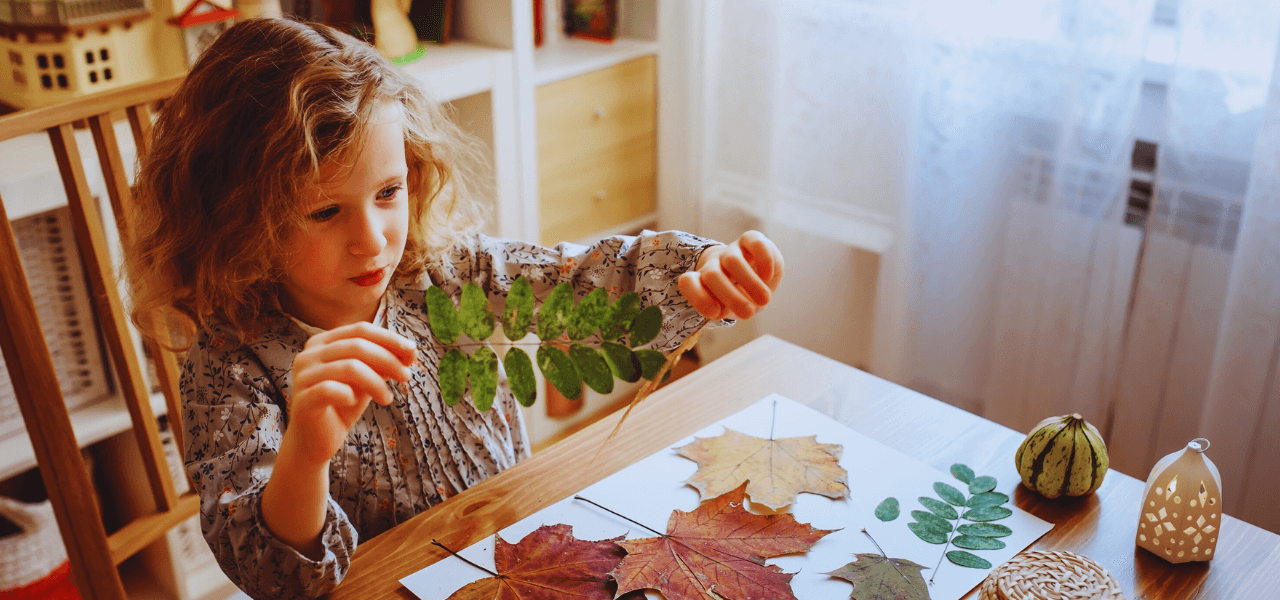Creating Crafts from Autumn Leaves with Blind Children
This material is suitable for children of all ages.
These guidelines are perfect for those teaching or wanting to teach visually impaired children how to navigate the world around them. We use autumn natural materials for early childhood development.
What is fine motor skills development, and why is it important? Fine motor skills refer to the precise movements of the hands and fingers. In children, fine motor skills form the foundation for the development of attention, memory, perception, thinking, and speech. Motor skills refer to the dexterity of the hands. Developing fine motor skills in children should start at an early age. The ability to perform precise small movements with the hands is developed when a child sculpts, glues, draws, or makes a craft. Manipulating small objects engages the small muscles in the hands and fingers. The fingertips are packed with numerous nerve endings. Every finger of the human hand is expressive, and each finger is also responsible for a particular aspect of the child’s emotional state. For adults, interaction with the world follows the pattern of brain-to-hand. The brain sends a command to gather information, and the hand executes it. A child’s hands explore an object, and the results of this exploration are sent to the brain. The more information the brain receives, the faster and more active the child’s mental development. When a child performs various small tasks, it positively impacts the development of speech since the brain areas responsible for motor skills and speech are located close to each other. The level of speech development depends on the degree of fine motor skill development. Any activity requiring the child to make precise movements helps develop fine motor skills, hand dexterity, and finger flexibility. Logical thinking develops as the child assembles the craft on their own.

Before starting the craft, the child should be guided through the steps. Gradually, the child will engage in the process and take pleasure in the work. The development of fine motor skills during creative activities coordinates the skeletal, muscular, and nervous systems.
During the activity, we explain to the children that autumn has arrived, bringing with it a bounty of vibrant colors. Any autumn craft begins with gathering materials. We collect fallen leaves from the ground, aiming to pick ones without damage. Avoid leaves that are too dry, as they can crumble when touched. Afterward, we dry the leaves for several days by placing them between the pages of a book. You can also iron the leaves, but be careful not to use the steam setting on the iron. Another option is to dry the leaves in the air by placing them on a windowsill under direct sunlight. The downside of this drying method is that the leaves can fade and lose their bright, rich colors. Another method is drying the leaves in the microwave, which takes about 30 seconds for each leaf.
Once the leaves are gathered and dried, we can begin crafting. Creating an autumn collage starts with thinking about the design. The dried leaves serve as the basis for the autumn collage. Silhouette collages involve cutting shapes from the leaves and gluing them together. To create a collage, you will need: cardboard or other sheets as a base, glue, brushes, scissors, and a pencil. Let the children stick the leaves themselves, with adults helping a little. With natural materials, you can create amazing crafts that will decorate your home or make a great gift for a loved one. Making collages is beneficial for both children and adults, as the process is calming and helps them relax.
